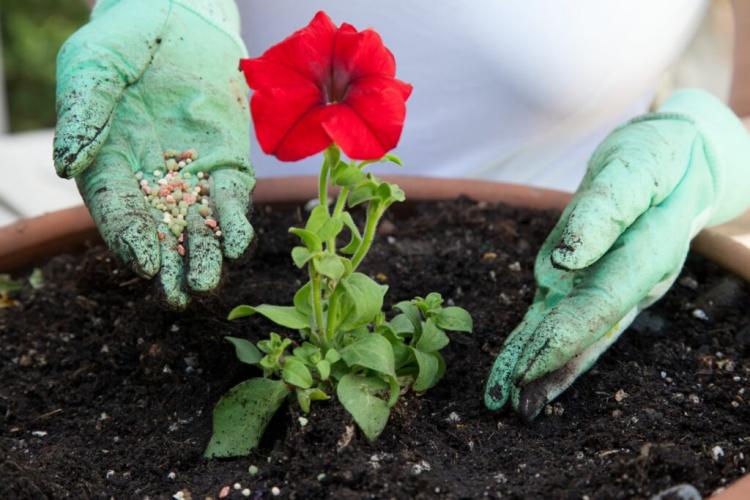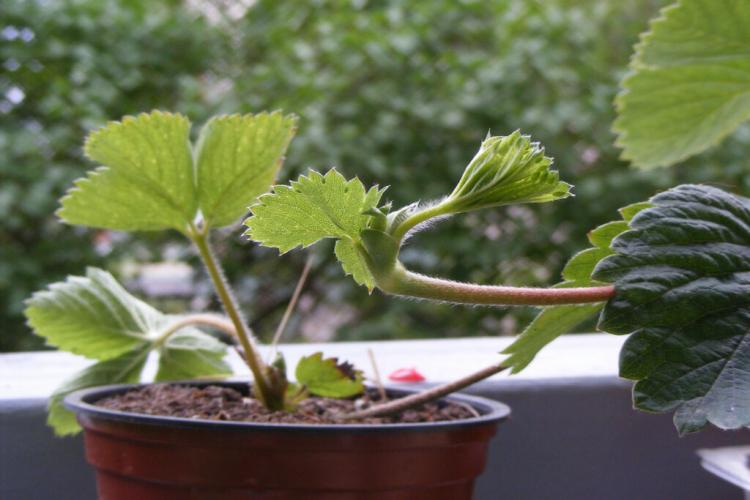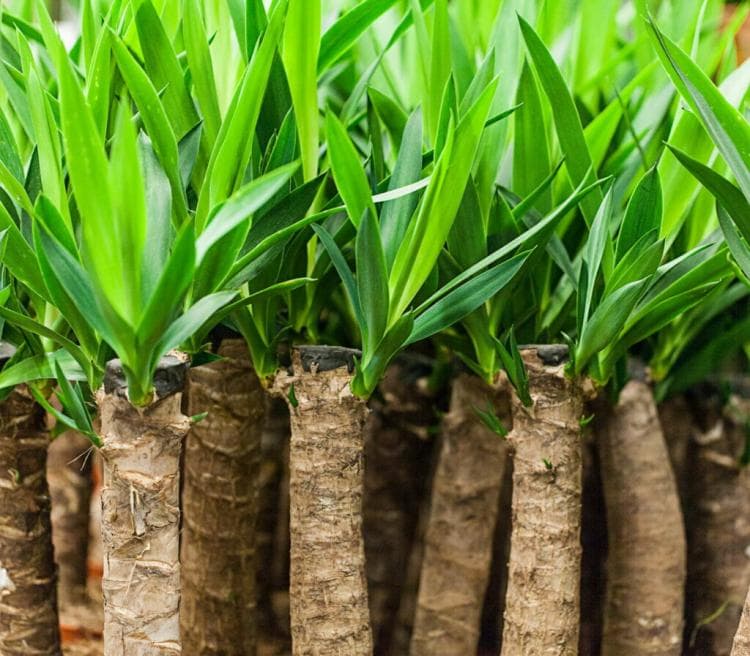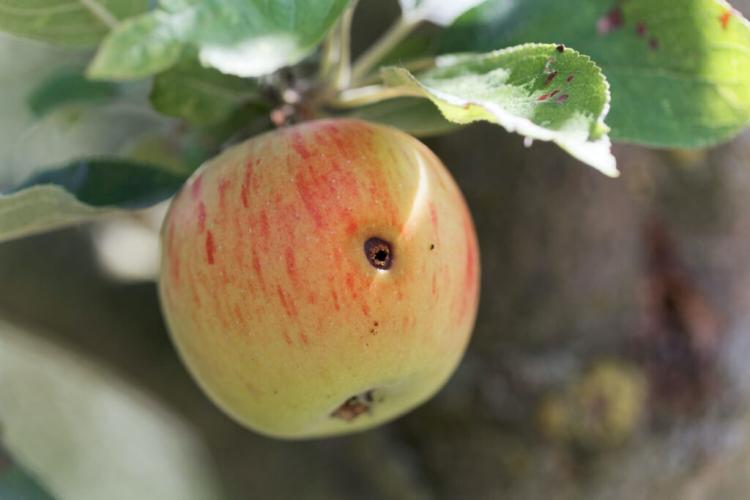'Blue Swede' potato: growing & harvesting the blue potato variety
If you are looking for a colorful change in the kitchen, the potato variety 'Blauer Schwede' is the right choice. We'll tell you here why you should swap the normal potatoes for their blue variant more often.
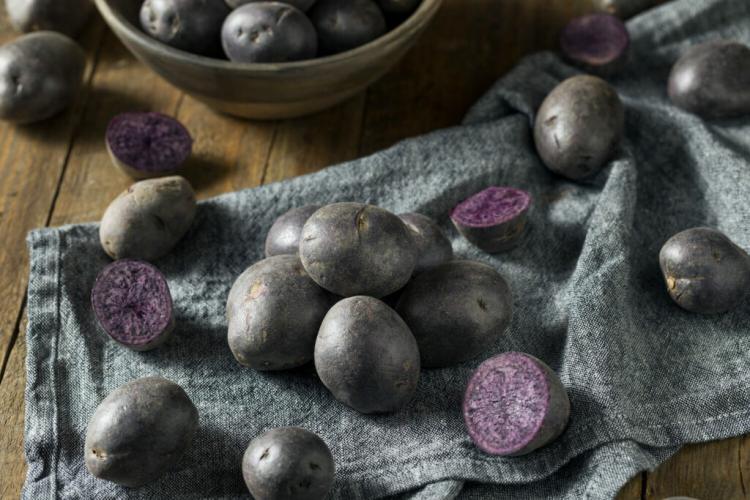
The potato variety 'Blauer Schwede' is a real eye-catcher from the outside as well as inside [Photo: Brent Hofacker / Shutterstock.com]
Often, colorful varieties such as the 'Blue Swede' do not find their way onto the supermarket shelves. The purple shell and the blue grain inside make for a real eye-catcher on every table. In terms of taste, the blue potato can keep up with its yellow relatives without any problems, which was probably one of the reasons why it was voted Potato of the Year in 2006.
'Blue Swede' potato: characteristics and origin
Table of Contents
The 'Blauer Schwede' potato, also known as 'Blue Congo' or 'Idaho Blue', is an old variety, the origin of which experts do not agree on. The origin of the blue potato is believed to be in South America. The strong blue color depends on the content of the so-called anthocyanins. These are natural coloring agents that can also be found in other red or blue fruits and vegetables. They are also said to have a positive effect on human health, as they ward off harmful metabolic products.

The potato has a wide variety of colors, including the blue potatoes [Photo: photka / Shutterstock.com]
Note : There are a few other types of blue or purple potatoes. You can find out more about this in our special article on purple potatoes.
Growing blue swede potatoes
The blue potato variety can be planted in a normal bed, raised bed or in a flower pot. With us you will find general tips on how to plant your potatoes or how to grow potatoes in the flower pot. The 'Blue Swede' is laid in the ground from the end of April to the end of May. The planting distance should be 30 to 35 centimeters in the row and 50 to 70 centimeters between the rows.
So-called seed potatoes and not seeds are used to grow potatoes. There are numerous suppliers of 'Blauer Schwede' seed potatoes, including organic ones, so that you have a large selection at your disposal. A nutrient-rich and potassium-accentuated soil like our Plantura organic tomato & vegetable soil is a good start when planting potatoes. Because the soil is suitable for both the pot and the bed, it is up to you where exactly you want to plant your 'Blue Swedes'. The blue potatoes germinate at a soil temperature of 7 to 8 ° C and can be planted from April. But it is also possible to let these germinate in the warm from March and only then to put them in the ground. This enables the 'Blue Sweden' to be harvested earlier. It should be noted, however, that the sensitive germs do not break off when they set in the soil.
maintenance
Of course, the 'Blauer Schwede' potato has to be piled up and checked for pests. You can read more about correct potato cultivation in our special article.
If you want to boost the yields of your blue potato, you can re-fertilize in June. For example, you can use a primarily organic fertilizer such as our Plantura organic tomato fertilizer. This is suitable for a wide variety of vegetables with a high need for potassium, especially if the soil is rather sandy and no potting soil has been used to improve it.
The 'Blue Swede' is easily susceptible to potato scab – a potato disease caused by the bacterium Streptomyces scabies . This needs oxygen to survive and here the resourceful gardener can use a trick that also includes the right watering:
In order to prevent potato scab, it is an advantage to water the potatoes very regularly in small doses, especially from the point where the tuber begins, i.e. before flowers appear. The scab-causing bacteria love oxygen and the water can fill the air pockets in the soil – the bacterium is inhibited in its development.
In addition, you should only chop a little so as not to bring more air into the soil.
In addition, late-ripening varieties such as the 'Blue Sweden' often suffer from late blight, triggered by the egg fungus Phytophthora infestans . By pre-germinating and thus an earlier harvest, you can counteract the fungal attack, since late blight only attacks the plants more strongly towards the end of the season. A varied crop rotation is also important. This means that you should not plant the 'Blauer Schwede' potatoes or vegetables from the nightshade family – such as potatoes, tomatoes, physalis or aubergines – in the same bed every year.
Harvest and use of blue Swedish potatoes
The harvest time for the 'Blue Swede' potato is usually around August, making the blue potato one of the mid-early varieties to be harvested. The tubers have reached their harvest size after 130 to 150 days. This can also be seen from the plant's slightly wilting foliage. Among the blue potato varieties, the 'Blauer Schwede' potato has the highest average yield.
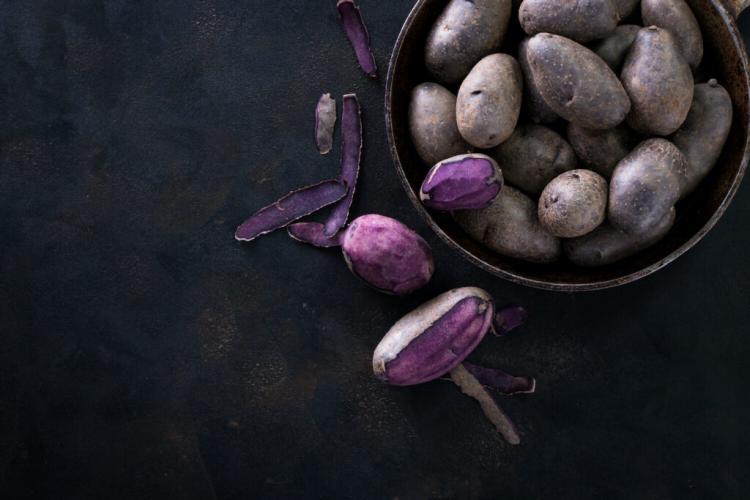
The bright color also comes out under the bowl
The floury to predominantly waxy blue potatoes can be used well as salad, jacket or boiled potatoes. The 'Blue Swede' can also convince from the oven as fries or gratin with its strong taste. The strong blue color can fade a little during preparation, but still remains characteristically blue.
If you want to know more about different types of potatoes, take a look at our overview of the 50 best types of potatoes.
